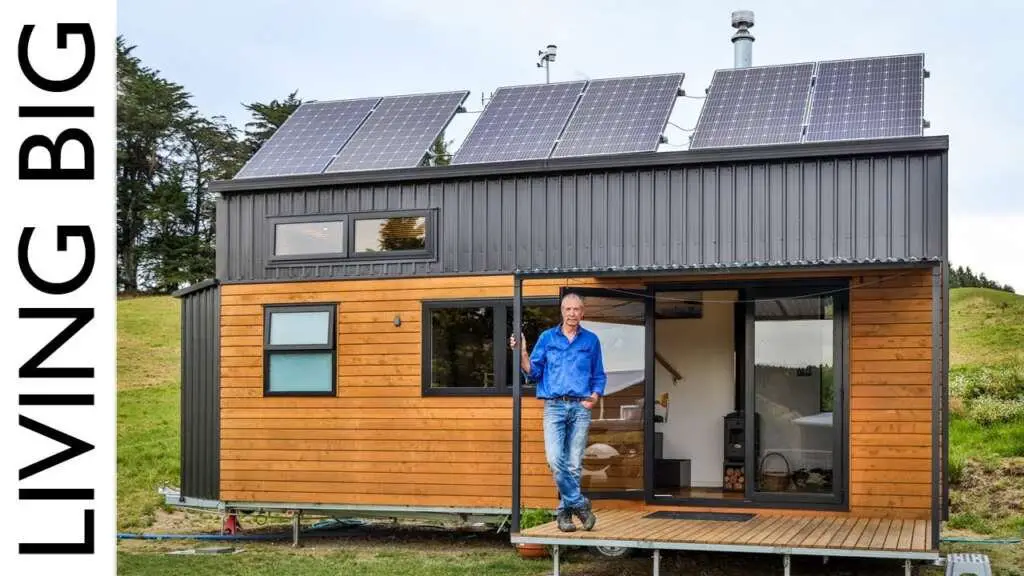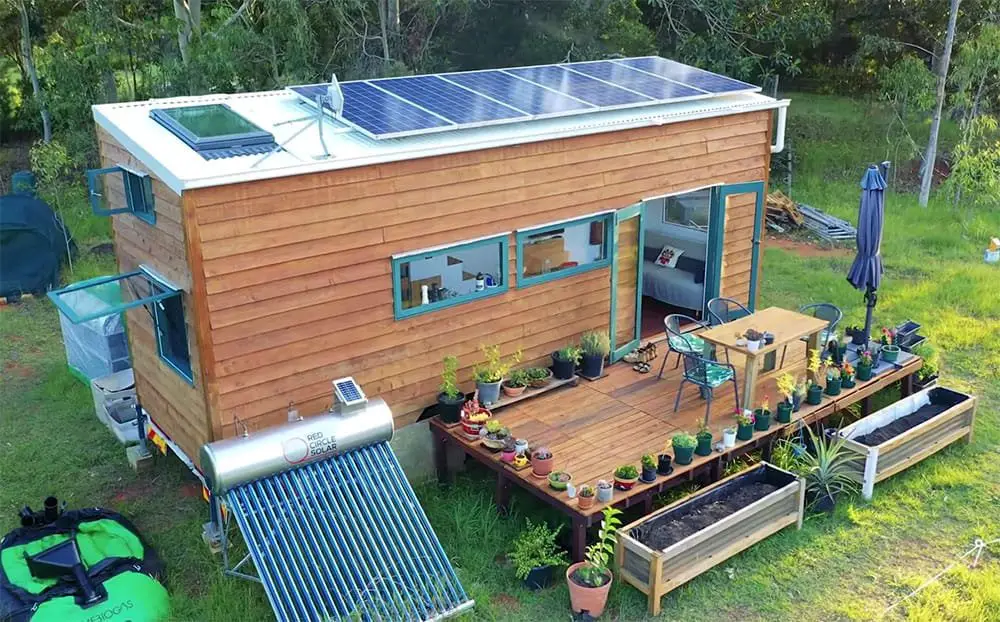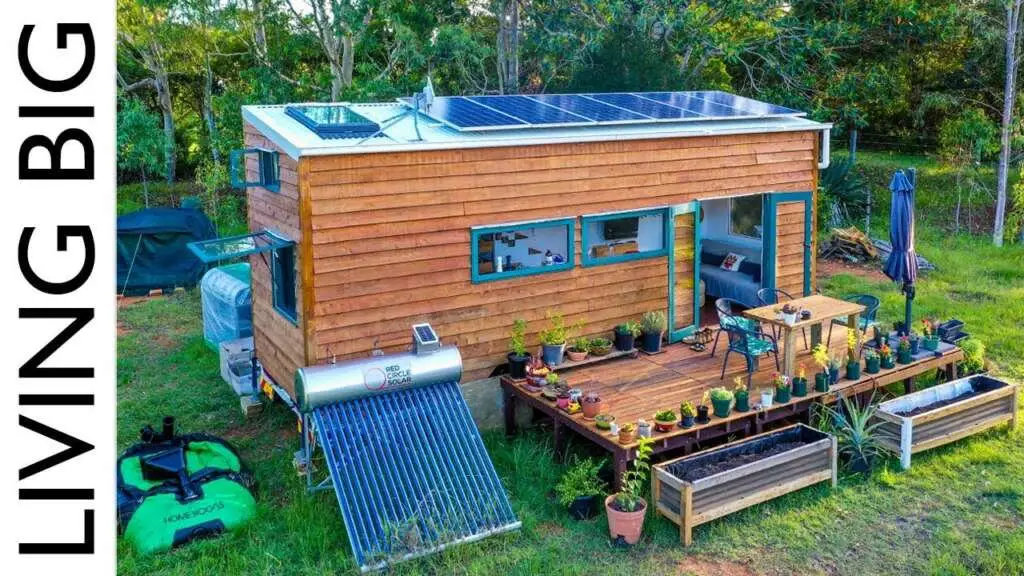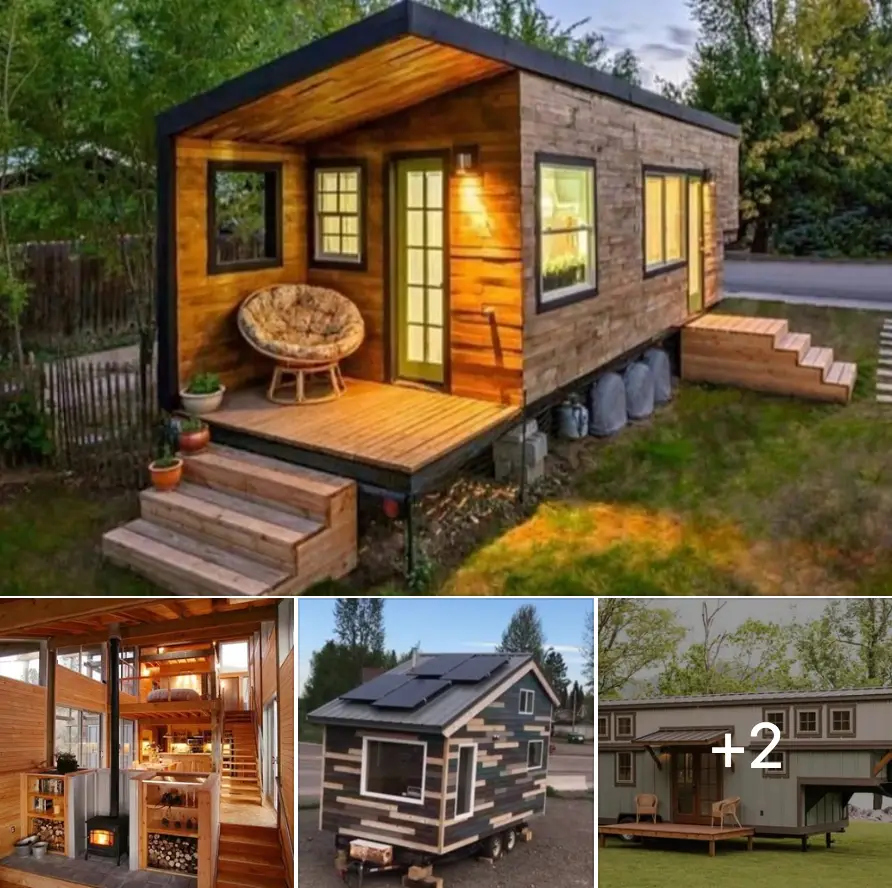Living off-grid can be an appealing lifestyle for those seeking simplicity, self-sufficiency, and a smaller carbon footprint. One question that often arises in this pursuit is whether tiny homes are a suitable option. With their compact size, minimalistic design, and potential for energy efficiency, tiny homes hold the promise of being an ideal choice for off-grid living. In this article, we will explore the benefits and considerations of tiny homes in the context of off-grid living, helping you to make an informed decision about this intriguing lifestyle choice.

What are Tiny Homes?
Tiny homes are compact and minimalist dwellings that typically range from 100 to 400 square feet in size. They are designed to maximize functionality and minimize space, providing a simple and efficient living space. These homes are gaining popularity as a solution for affordable housing and sustainable living.
Definition of Tiny Homes
A tiny home is a small dwelling that serves as a primary residence, usually consisting of a living space, bathroom, and kitchenette. They are built with the intention of minimizing environmental impact and promoting a more sustainable lifestyle. While the exact size may vary, the small and efficient design is a key characteristic of these homes.
Features of Tiny Homes
Tiny homes are designed with clever use of space and thoughtful design features to maximize functionality. These features often include lofted sleeping areas to save floor space, multifunctional furniture that serves more than one purpose, and compact appliances that are scaled down to fit the small space. Many tiny homes also incorporate storage solutions such as built-in cabinets and shelving to optimize storage options.
Advantages of Tiny Homes
There are several advantages to living in a tiny home. Firstly, the cost of building and maintaining a tiny home is significantly lower compared to traditional homes, making them an attractive option for those on a budget. Additionally, the reduced square footage means fewer resources are required to heat, cool, and maintain the home, resulting in lower monthly bills. Furthermore, the small size of tiny homes promotes a simplified lifestyle, allowing for more focus on experiences and personal connections rather than material possessions.
Off-Grid Living
Off-grid living refers to living independently and self-sufficiently, without relying on public utilities such as electricity, water supply, and sewage systems. Off-grid living is often associated with sustainable practices and a reduced carbon footprint.
Definition of Off-Grid Living
Living off-grid means that you are responsible for your own energy production, water supply, waste disposal, and food production. It is a lifestyle choice that promotes self-sufficiency and independence from traditional utility services. Off-grid living can be achieved through various methods such as installing solar panels for electricity, using rainwater harvesting systems for water supply, composting toilets for waste disposal, and growing your own food.
Benefits of Off-Grid Living
One of the main benefits of off-grid living is the reduced dependence on external resources and utilities. By generating your own energy, collecting your own water, and managing your own waste, you have greater control over your environmental impact and can reduce reliance on finite resources. Additionally, living off-grid often allows for a closer connection to nature and a simpler, more sustainable lifestyle.
Challenges of Off-Grid Living
While off-grid living has its advantages, it also comes with its fair share of challenges. The initial cost of setting up an off-grid system can be quite high, as it involves investing in solar panels, rainwater collection systems, and other infrastructure. Additionally, off-grid living requires a higher level of maintenance and hands-on involvement than traditional living. For example, monitoring and maintaining solar panels or managing waste disposal can require additional time and effort.
Factors to Consider
Before embarking on off-grid living in a tiny home, there are several important factors to consider to ensure a successful transition. These factors include energy efficiency, water supply, waste disposal, food production, and climate and location.
Energy Efficiency
One of the key considerations for off-grid living is the energy efficiency of your home. This includes choosing energy-efficient appliances, insulating the home properly, and utilizing renewable energy sources such as solar power. By optimizing energy efficiency, you can reduce your energy consumption and minimize reliance on external energy sources.
Water Supply
Another crucial factor is ensuring a reliable and sustainable water supply. Off-grid living often involves collecting rainwater or utilizing other natural water sources, such as wells or streams. It is important to have a comprehensive plan for water collection, filtration, and storage to ensure an adequate and safe water supply.
Waste Disposal
Proper waste disposal is essential in off-grid living. Composting toilets are a popular option for off-grid tiny homes as they eliminate the need for traditional sewage systems. Additionally, implementing recycling and composting practices can help minimize waste generation and reduce the environmental impact.
Food Production
Growing your own food is a key aspect of off-grid living. Consider the availability of arable land, the climate, and the types of crops that can be grown in your area. Incorporating permaculture and sustainable farming practices can help maximize food production and create a self-sustaining food system.
Climate and Location
The climate and location of your off-grid tiny home are important considerations. Understanding the local weather patterns, temperature fluctuations, and seasonal changes will help inform decisions regarding insulation, heating, and cooling methods. Additionally, the availability of sunlight for solar energy generation and access to natural resources should be taken into account when choosing a location for off-grid living.
Advantages of Tiny Homes for Off-Grid Living
Tiny homes offer several advantages for those looking to embrace off-grid living.
Reduced Energy Consumption
Due to their small size, tiny homes naturally have lower energy requirements compared to traditional homes. Heating, cooling, and lighting a smaller space requires less energy, making it easier to transition to off-grid living.
Lower Environmental Impact
Tiny homes are designed to have a minimal carbon footprint. By incorporating energy-efficient features and sustainable building practices, tiny homes can significantly reduce environmental impact and promote a more eco-friendly lifestyle.
Affordability
Tiny homes are often more affordable to build and maintain compared to traditional homes. The reduced square footage and simplified design mean lower construction costs, and the smaller size results in reduced monthly bills for utilities such as electricity and water.
Mobility and Flexibility
Tiny homes are typically built on wheels or with the ability to be easily transported. This mobility allows for flexibility in choosing the location of your off-grid living, whether it be in a remote natural setting or within a sustainable community. The ability to move your home to a new location also provides a sense of freedom and adventure.
Simplified Lifestyle
Living in a tiny home encourages a simplified and minimalist lifestyle. By embracing a smaller space, individuals are encouraged to declutter and prioritize experiences over material possessions. This simpler way of living can lead to reduced stress, increased mindfulness, and a stronger connection with nature and the environment.

Limitations of Tiny Homes for Off-Grid Living
While tiny homes offer many advantages for off-grid living, there are also limitations to consider.
Limited Space
The most obvious limitation of tiny homes is their limited space. The compact size may not be suitable for everyone, especially those who require a larger living area or have specific accessibility needs. It is important to carefully consider your space requirements and whether a tiny home can meet your lifestyle needs.
Storage Challenges
With limited square footage, storage can be a challenge in tiny homes. It requires careful planning and creative solutions to optimize storage space and minimize clutter. Downsizing belongings and adopting minimalistic habits are necessary for successful tiny home living.
Dependency on Renewable Resources
Off-grid living in a tiny home relies heavily on renewable energy sources such as solar power. While this can be a sustainable and reliable option, it is important to have backup plans in place for times when renewable resources may be limited due to weather conditions or other factors.
Lack of Amenities
Tiny homes may lack certain amenities commonly found in traditional homes, such as a large kitchen or multiple bathrooms. It is important to assess your needs and determine if the limited amenities provided by a tiny home can meet your requirements and lifestyle preferences.
Social Isolation
Living in a remote or off-grid location can result in social isolation, especially if there are limited opportunities for interaction with neighbors or the local community. This can be a significant challenge for individuals who thrive on social connections and community engagement. It is important to consider the social implications of off-grid living and seek ways to maintain a sense of community.
Design Considerations for Off-Grid Tiny Homes
When designing an off-grid tiny home, it is essential to consider various factors and incorporate appropriate features to ensure self-sufficiency and sustainability.
Solar Power Systems
Solar panels are a popular choice for generating electricity in off-grid tiny homes. These systems capture sunlight and convert it into usable energy. When designing a solar power system, factors such as the amount of sunlight, the number of panels required, and battery storage capacity should be taken into account.
Rainwater Harvesting
Rainwater harvesting systems collect rainwater from the roof and store it for later use. This water can be used for various purposes, including drinking, cooking, and irrigation. Proper filtration and storage systems should be implemented to ensure the water is safe for consumption.
Composting Toilets
Composting toilets are a sustainable alternative for waste disposal in off-grid tiny homes. These toilets use natural processes to break down human waste into compost, which can then be used as fertilizer for plants. They eliminate the need for traditional sewage systems and minimize water consumption.
Off-Grid Appliances
Choosing energy-efficient appliances that operate off-grid is crucial for reducing energy consumption. Off-grid appliances are designed to run on renewable energy sources such as solar power or propane. When selecting appliances, consider their energy requirements and compatibility with your off-grid system.
Insulation and Ventilation
Proper insulation and ventilation are key for maintaining a comfortable living environment in off-grid tiny homes. Insulation helps retain heat during colder months and keeps the interior cool during hot weather. Adequate ventilation ensures air circulation and prevents condensation and mold buildup.

Case Studies
Case Study 1: Successful Off-Grid Tiny Home
In this case study, we examine a couple who successfully embraced off-grid living in their tiny home. They designed their home with solar panels, rainwater harvesting systems, and a composting toilet. Through careful planning and sustainable practices, they achieved self-sufficiency and reduced their carbon footprint. They enjoy the freedom of living off-grid and have found a deep connection with nature and the surrounding community.
Case Study 2: Challenges Faced in Off-Grid Tiny Home Living
This case study focuses on a family who faced challenges in their off-grid tiny home living. They underestimated the initial costs and maintenance requirements of their off-grid systems, which led to financial strain and a lack of preparedness. They also struggled with limited space and storage challenges, which affected their overall comfort and quality of life. This case study serves as a reminder to thoroughly plan and budget when considering off-grid tiny home living.
Case Study 3: Expanding Off-Grid Tiny Home Community
In this case study, we explore a community that has embraced off-grid living in tiny homes. This community has created a sustainable and self-sufficient lifestyle by sharing resources and implementing innovative solutions. They have established a cooperative system for energy production, water supply, waste management, and food production. This case study highlights the potential for collective off-grid living and the positive impacts of community support.
Conclusion
Tiny homes can be a suitable option for those considering off-grid living. With their small footprint, energy-efficient design, and affordability, tiny homes offer several advantages for a sustainable and self-sufficient lifestyle. However, it is important to carefully consider the limitations and challenges, such as limited space and social isolation. By taking into account factors such as energy efficiency, water supply, waste disposal, and climate, individuals can design and live in off-grid tiny homes that truly support a sustainable and fulfilling way of life.


